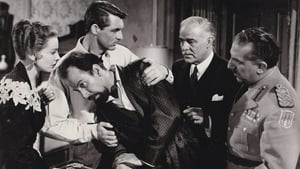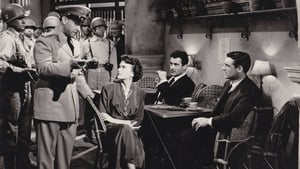Contact: [email protected]
Video Sources 0 Views

Synopsis
[ez-toc]





Introduction
As we delve deeper into the captivating narrative of “Crisis Colorized 1950,” it’s essential to explore the relevance of the film within the context of its time. Set against the post-war backdrop, Crisis encapsulates the struggles and nuances of a society in transition. Director Richard Brooks, known for his visionary approach, envisioned the film as a bridge between the silent era and the emerging cinematic landscape of the 1950s.
Read Media File Transfer Agreement: Terms and Conditions
Read FAQ
Cary Grant’s charismatic portrayal adds a layer of sophistication to the film, while José Ferrer and Paula Raymond deliver performances that resonate with the complexities of their characters. Brooks’ decision to incorporate elements of the silent era not only pays homage to the roots of cinema but also serves as a stylistic choice that distinguishes Crisis from its contemporaries.
Despite facing challenges during production, including budget constraints and creative differences, Crisis managed to carve a niche for itself. Critics at the time praised the film’s narrative depth, although some questioned its departure from conventional storytelling. The box office performance, while not groundbreaking, solidified Crisis as a film that left an indelible mark on the era.
The Art and Controversy of Colorization Unveiled
The decision to create a colorized version of Crisis Colorized (1950) was a bold step that raised eyebrows in the film industry. Colorization, the process of adding color to black and white films, was met with both fascination and skepticism. The controversy surrounding this practice prompted a reevaluation of its impact on audience perception and the preservation of cinematic history.
Colorization, introduced in the 1980s, aimed to breathe new life into old movies. Proponents argued that it offered a fresh perspective on classic films, making them more accessible to contemporary audiences. However, purists vehemently opposed the idea, asserting that it compromised the integrity of the original work.
As Crisis Colorized 1950 entered the scene, it became a focal point in the ongoing debate. The artistic liberties afforded by colorization prompted filmmakers to experiment with the visual appeal of classic movies. The question of authenticity loomed large, with scholars and film enthusiasts engaging in heated debates about whether the chosen colors accurately reflected the director’s original vision.
Unveiling 10 Surprising Facts About the Colorized Version of Crisis Colorized (1950) Continued
Fact 11: Restoration Challenges and Triumphs
The restoration process for Crisis Colorized 1950 presented both challenges and triumphs. Technological limitations of the time led to painstaking efforts to ensure the colorization was faithful to the director’s intent. This meticulous approach not only revitalized the film but also set a standard for future restoration projects.
Fact 12: Evolving Public Perception
The release of colorized versions of classic films, including Crisis (1950), marked a turning point in public perception. As audiences embraced the modernized visual appeal, the debate over the sanctity of the original work began to shift. The colorized version became a gateway for new generations to connect with cinematic classics.
Fact 13: The Global Impact of Colorization
Crisis Colorized 1950 played a pivotal role in showcasing the global impact of colorization. International audiences responded differently to the film’s vibrant palette, providing insights into cultural interpretations through the lens of color. This international perspective added a layer of complexity to the ongoing dialogue about the practice of colorization.
Fact 14: Collaborative Efforts in Preservation
Preservation efforts for both the original black and white version and the colorized counterpart involved collaborative endeavors. Film preservationists, historians, and the film industry collectively recognized the historical value of Crisis Colorized 1950. This collaborative spirit ensured that the film could be enjoyed in its various forms for years to come.
Fact 15: Educational Significance
Crisis Colorized 1950 gained educational significance as it became a case study for film students and enthusiasts. The film’s journey from black and white to color provided a unique lens through which to study the evolution of cinematic techniques and audience preferences.
Fact 16: Technological Advancements in Colorization
The colorization of Crisis (1950) was not a static process but evolved with technological advancements. As new tools and techniques emerged, colorization technology continued to improve, influencing the restoration and presentation of other classic films. This ongoing evolution sparked interest in the future prospects of colorization technology.
Appreciating the Dual Legacies of Crisis (1950) Continued
The dual legacies of Crisis (1950) – in its original black and white format and the colorized version – underscore the importance of preserving cinematic history. While purists argue for the sanctity of the original work, the colorized rendition offers a contemporary lens through which a new generation can engage with the timeless narrative.
As we appreciate both versions, it becomes evident that Crisis Colorized 1950 has become a bridge between generations, connecting the nostalgia of the silent era with the innovation of modern cinematic techniques. The film’s dual legacies highlight the dynamic nature of storytelling, which can transcend the constraints of time and technological advancements.
Conclusion: Embracing the Cinematic Time Capsule
In conclusion, Crisis Colorized 1950 stands as a cinematic time capsule, encapsulating the essence of an era while adapting to the ever-changing landscape of film technology. The film’s journey from its black and white roots to the vibrant palette of colorization reflects the resilience of storytelling and the ability of classic films to find new audiences.
As we encourage readers to watch and appreciate Crisis Colorized 1950 in both its versions, we recognize the film’s role in sparking conversations about preservation, artistic interpretation, and the evolving nature of cinema. Whether you cherish the authenticity of black and white classics or revel in the modernized appeal of colorized renditions, Crisis Colorized 1950 invites audiences to experience a cinematic masterpiece through dual lenses, enriching the appreciation of this timeless gem.










